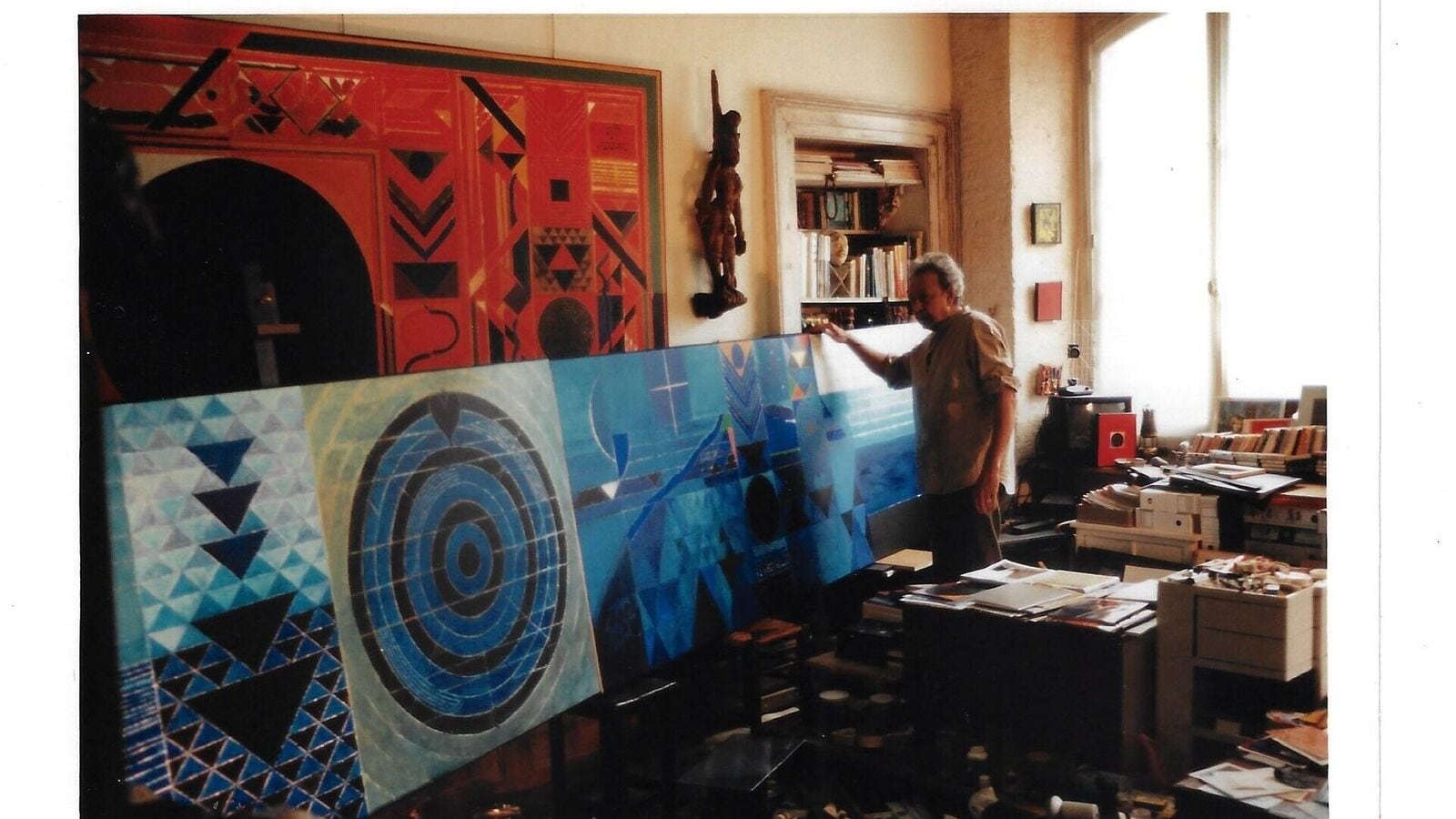Copyright © HT Digital Streams Limit all rights reserved. Lounge Sh Raza in his studio in Paris. Courtesyl Raza Archive, The Raza Foundation, New Delhi Summary A new book, ‘Celebration & Prayer’, offers insights in the modern master’s art, life and belief in a letter written to artist Janine Mongillat, while he promised her in Paris, Syed Haider Raza, one of India’s leading Moders. promised. “Raza arrived in France in 1950 to study at the Ecole Des Beaux -Art, where he first met Mongillat, who later became his wife. These words, written in a stream of consciousness, gained tremendous meaning in retrospect. Lifetime and further, he became the first non -European to receive the prestigious Prix de la Critique in 1955, which made him part of a lofty league, including Akira Kito and Jean Dubuffet. Works still set records on Auctions. And now, a new book, entitled Celebration & Prayer (Speaking Tiger), written by Ashok Vajpeyi one of the artist’s closest friends and the management of the Trustee of the Raza Foundation Coming with behind-the-scenes insights into the evolution of a young boy from a small town of Madhya Pradesh in a philosophical painter. The book is not just a scientific work, which illustrates the different ways to look at the artist’s practice – rather Vajpeyi writes from his knowledge of Raza’s mind. Unlike the academic tomes written about the artist, this one is peppered with conversations, memories and observations. Vajpeyi’s main focus is the multitude of Raza’s vision. Also read: Lounge Loves: Dhiren Cabin, Hyperlocal Treats View Full Image ‘Celebration & Prayer’, by Ashok Vajpeyi, spoke Tiger, 182 pages, £ 599 born in 1922, when he moved to Damoh in Madhya Pradesh to the High School, ” Hindu to appreciate. Repetition is particularly important at a time, for example, for example, Vajpeyi writes that he moved to Delhi, for example, to Mongillat, when Raza moved to Delhi in 2011, a mosque and a church. He retained his Indian passport, even while lived overseas. He would return regularly to visit towns, cities and caves to use the color and metaphysical ideas in India. Raza carried the homeland within him. Vajpeyi writes about his painting, Maa (1980): “It is as if the surrounding scapes of France are being replaced by an imaginary homeland that looked clearer in the motherland.” Also read: Always a newsmaker: The mystery of MF Husain, although Raza’s works contain geometric forms in recurring themes of the bindu, purush-sacrracriti and the panchtattva, it is not dense or solid, but pulse with energy. “I have no excuse for my repetition of the shape of the bindu. With repetition you can obtain energy and intensity – as is obtained by the Japmala, or the repetition of a word or a syllable – until you reach an increased consciousness,” Vajpeyi Raza quotes. It is this inner voice of the artist – ‘A Geography of the Soul’ – which provokes Vajpeyi in celebration and prayer. The book also places Raza in the context of the Progressive Artist Group, which he founded together, how many artists in the group with West Serious Training have succeeded in creating a distinctive language to respond to a newly-ending India-whether it is now through their involvement with fiction, film, theater and other performing arts. Raza, for one, became strongly involved with poetry. One of the most interesting divisions is related to his attempt with Hindi poetry, which brought together Vajpeyi and Raza in the 1970s, with the former who regularly sent the artist books of Con temporary Hindi poetry. Raza would keep a diary where he noticed ideas, thoughts and lines he liked. In the last phase of his practice, he wrote down lines of poetry in Sanskrit, Hindi and Urdu in Devanagari script on his canvas. The other arrest chapter is Life, Art and Gandhian Light, who look at the influence of MK Gandhi on the artist. After division, Raza chose to stay back in India, although his family and first wife migrate to Pakistan. Vajpeyi mentions a conversation with Raza about this decision, where the artist acknowledged that he thought he would “betray the Mahatma if he left the nation”. He believed in the idea of truth and non-violence by Gandhi. With his return to Delhi in 2011, Vajpeyi suggested that Raza do a set of paintings inspired by these ideas. “One late afternoon in 2013, I found that he was doing a cloth in very muted colors … The painting in question had Gandhi’s last words when he fell dead from the bullets of his assassin: ‘Hey ram’. It has a significant use of white, which indicates both purity and hope, but also the cans with a mist or cloud of sadness, “Vajpeyi -writ. The business news, market news, news reports and latest news updates on Live Mint.
‘Celebration & Prayer’: Poet Ashok Vajpeyi paints a portrait of Raza in words
